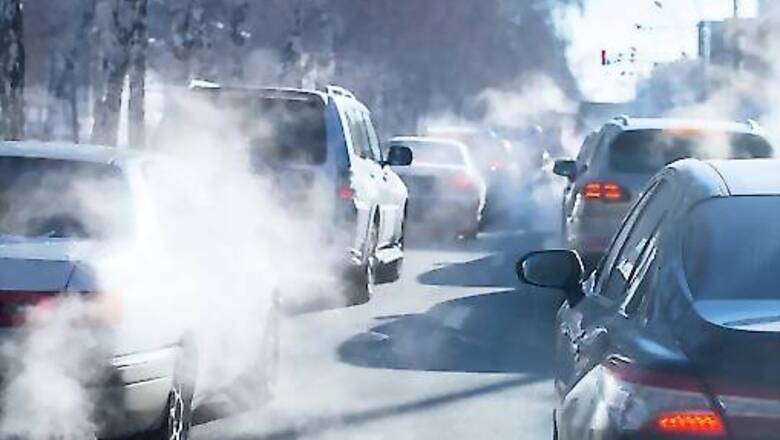
views
A new study conducted by Pune-based Indian Institute of Tropical Meteorology suggests that COVID-19 virus piggybacks only black carbon emitted during biomass burning and not all PM2.5 particles. The study, published in the journal ELSEVIER, is based on data collected from Delhi, from September to December 2020, and the 24-hour average of particulate matter (PM) 2.5 and black carbon (BC).
PM2.5 refers to fine particles which penetrate deep into the body and fuel inflammation in the lungs and respiratory tract, leading to the risk of having cardiovascular and respiratory problems, including a weak immune system. PM2.5 consists of black carbon, often called soot, and polycyclic aromatic hydrocarbons (PAHs), among others.
Almost 40 per cent of BC emissions are attributed to open biomass burning, 40 per cent to fossil fuel burning, and the remaining 20 per cent to biofuel burning. Several studies have linked air pollution to higher COVID-19 cases. A study carried out in Italy correlated the incidence of coronavirus cases with PM2.5 levels, the authors — Aditi Rathod and Gufran Beig — said.
“However, in this paper, we argue that not all PM2.5 particles carry the virus. It is only black carbon which is emitted during biomass burning which carries the virus,” Beig, senior scientist and founder-project director, SAFAR, said. “Delhi was worst affected by the novel coronavirus infection. However, when the situation was returning to normal after about six months with minimum fatalities, it suddenly encountered a reversal with a 10-fold increase in infection counts, coinciding with the onset of the stubble burning period in neighbouring states,” the study stated.
The aged biomass BC particles tend to aggregate and react with other compounds to grow in size, providing temporary habitat to viruses leading to the rapid increase in COVID-19 cases, which declined after the crop burning stopped. The researchers found that the concentration of black carbon “directly corresponds to the speed at which infections spread after the onset of winter and stubble burning period and then reduced with a declining trend in BC with reduction in stubble fire counts”.
The surge in black carbon emission is directly related to the additional contribution of stubble burning-induced PM2.5 concentration transported externally from stubble burning regions, the study said. In another study conducted earlier, Beig and his co-authors had said that people living in the national capital and in states such as Maharashtra, Uttar Pradesh, Madhya Pradesh and Tamil Nadu are more likely to contract COVID-19 due to prolonged exposure to high concentration of PM 2.5.
“Higher number of COVID-19 cases have been found in places like Maharashtra, Delhi, Rajasthan, Tamil Nadu, Uttar Pradesh, Andhra Pradesh, Telangana, Gujarat, Bihar, Karnataka, Odisha and Madhya Pradesh with prolonged exposure to high concentration of PM2.5,” the report had said.
Read all the Latest News, Breaking News and Coronavirus News here.



















Comments
0 comment